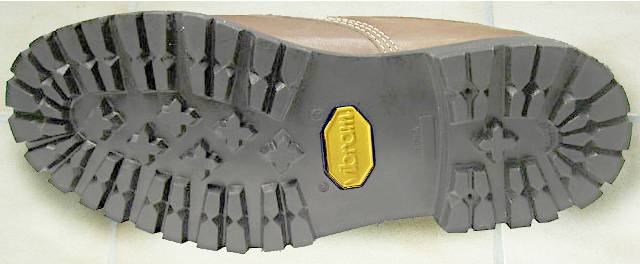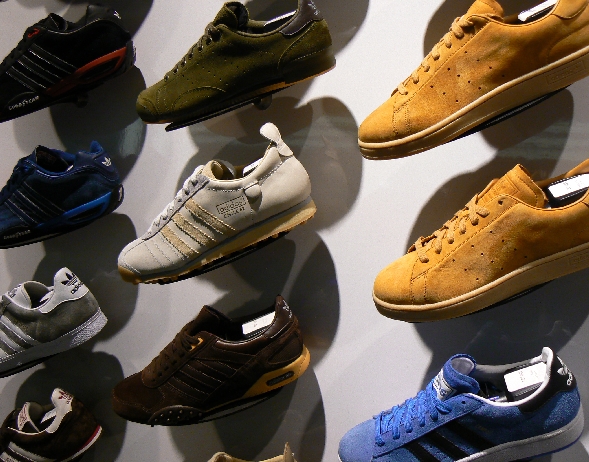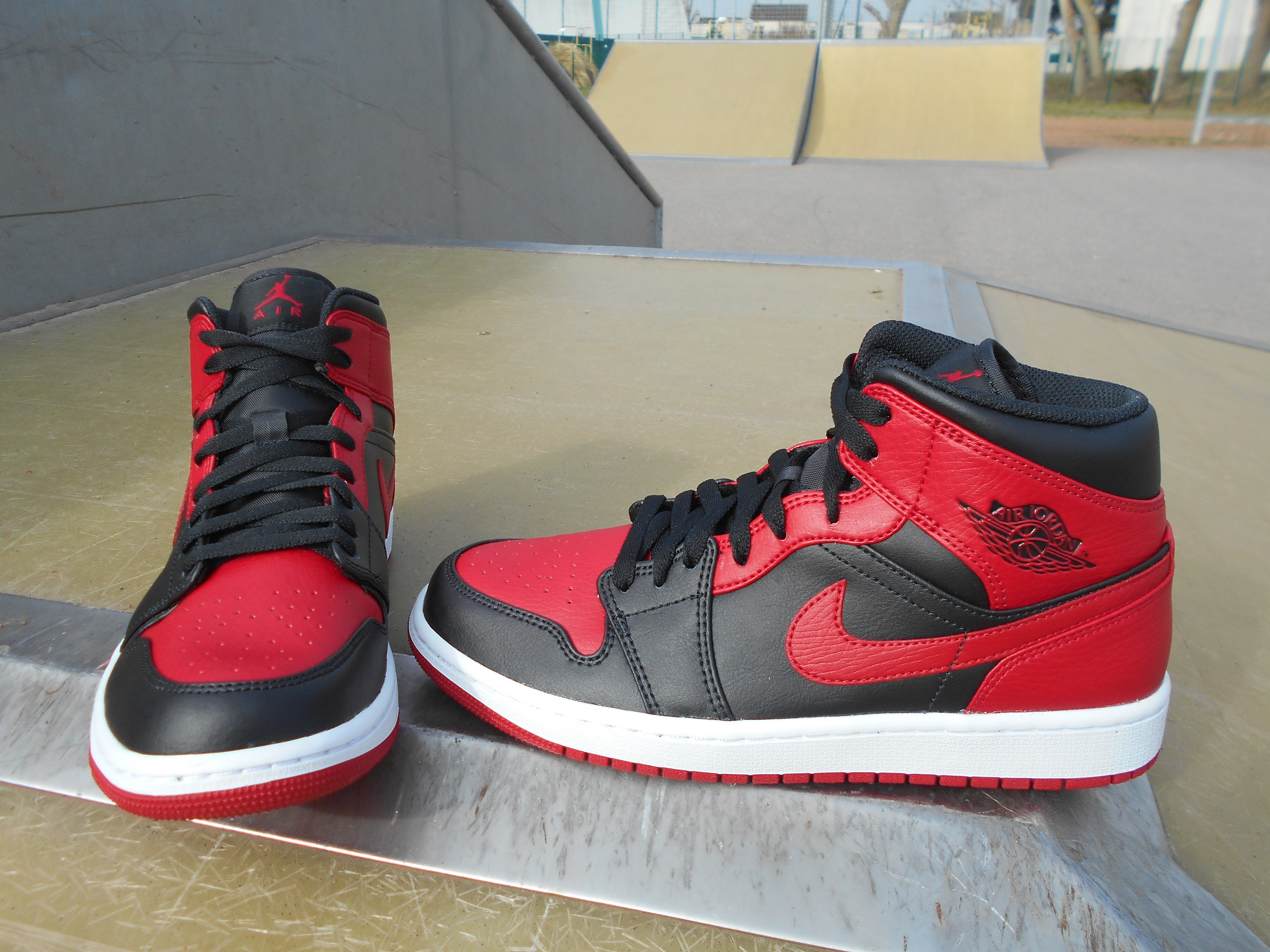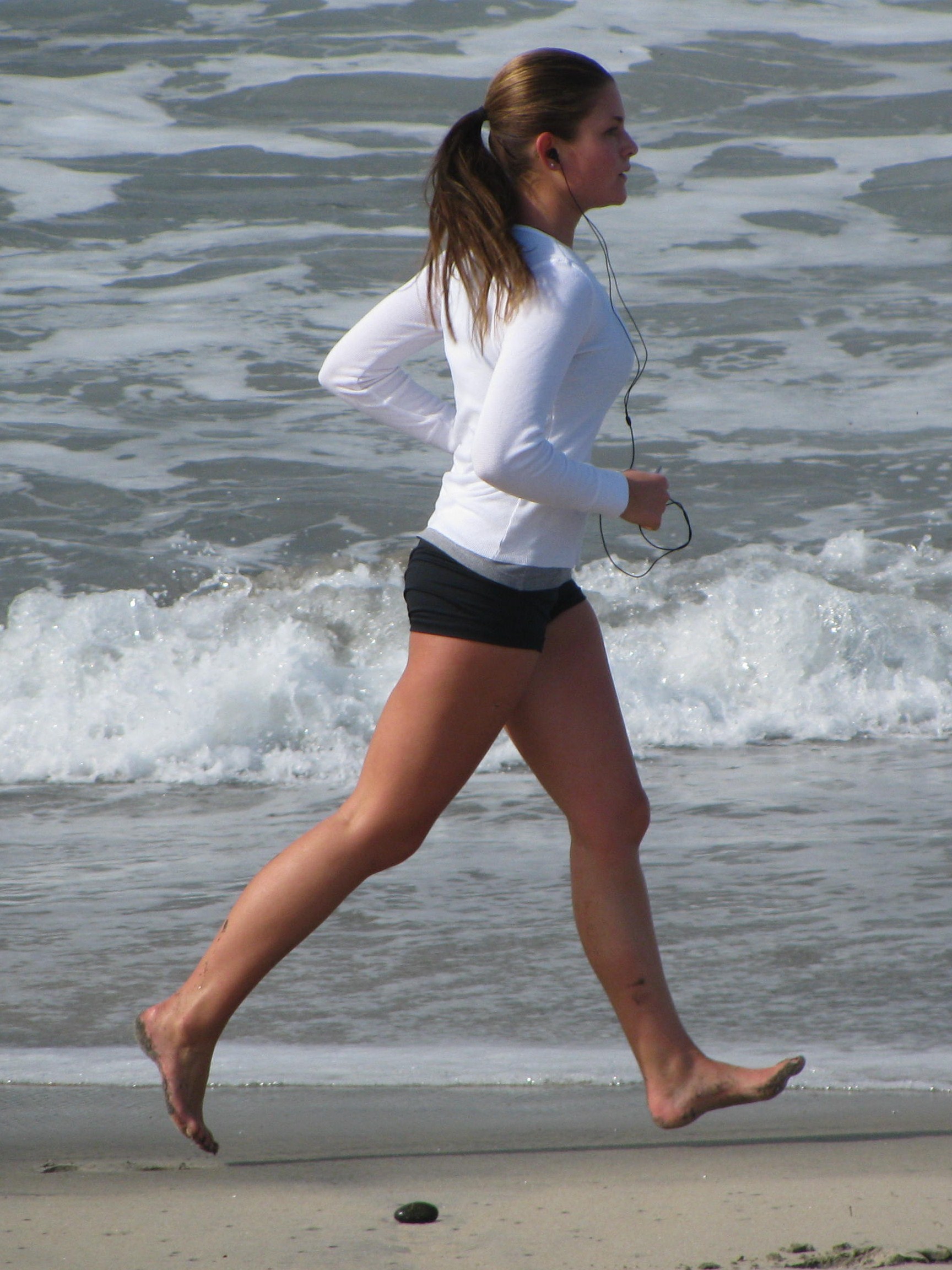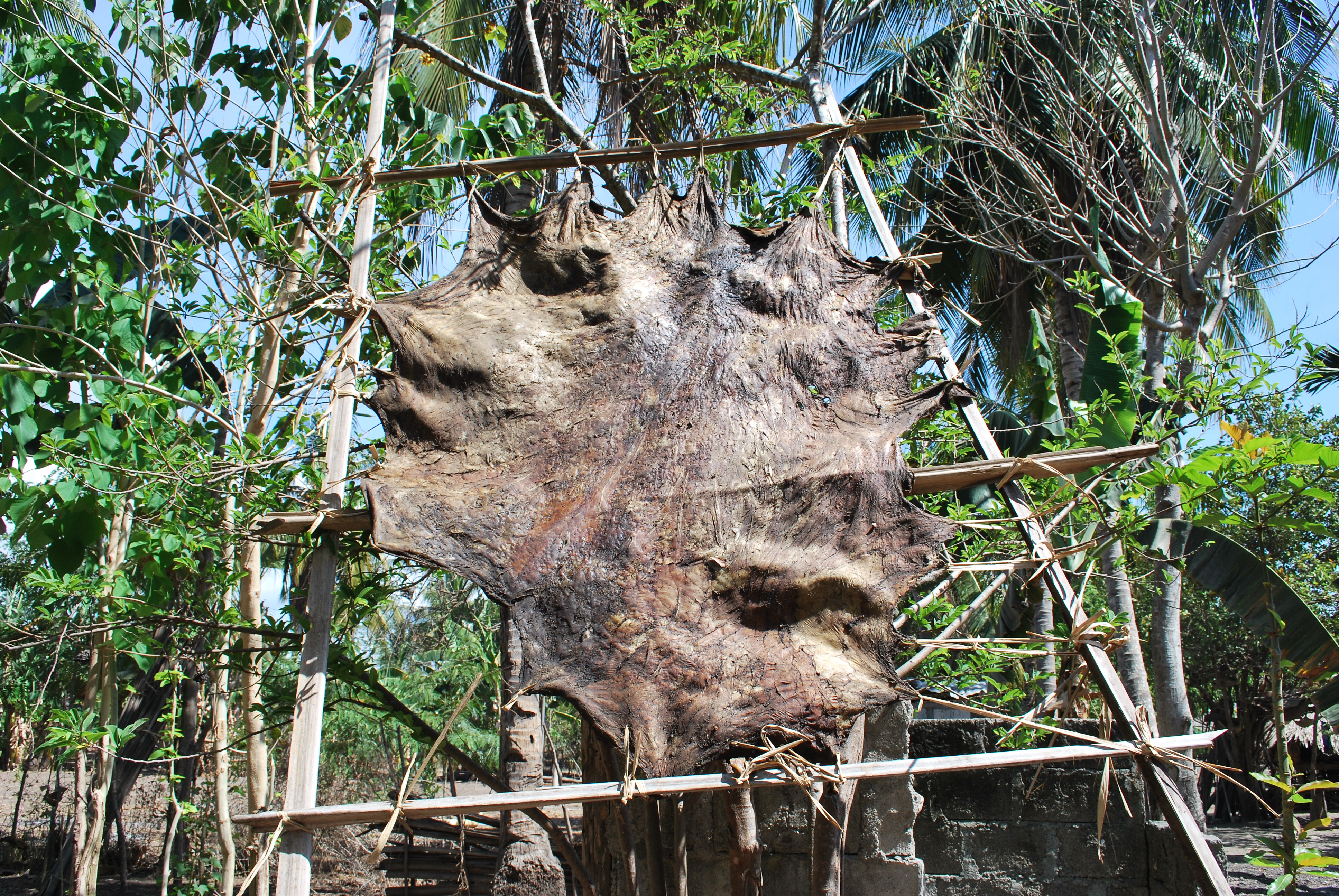|
Huarache (running Shoe)
Huaraches are an open type of outdoor footwear, consisting of a sole held to the wearer's foot by straps passing over the instep and around the ankle. The common understanding is that these sandals were a variant of traditional Mexican huaraches, the difference being in design and construction. These sandals are favoured by minimalist runners for several reasons. They force the foot and the runner to run with a natural gait. They also help protect the foot from glass, gravel, and other debris. In Christopher McDougall's book ''Born to Run'', the author describes the Rarámuri of the Mexican Copper Canyons teaching a fellow runner how to build huaraches. Design The primary design difference from traditional huaraches is in the straps that cover the front of the foot. In the traditional sandals, the straps are woven in an intricate design. In the variant used for running, the straps are much simpler and less ornate. Construction Huaraches were originally made from leath ... [...More Info...] [...Related Items...] OR: [Wikipedia] [Google] [Baidu] |
Vibram
Vibram S.p.A. is an Italian company based in Albizzate, Italy, that both manufactures and licenses the production of Vibram-branded rubber outsoles for footwear. The company is named after its founder, Vitale Bramani, who is credited with inventing the first rubber lug soles. Vibram soles were first used on mountaineering boots, replacing leather soles fitted with hobnails or steel cleats which were commonly used up until then. The soles produced by Vibram are called Vibram soles, Vibram rubber, or simply Vibram. History The deaths of six of Bramani's mountaineering friends in the Italian Alps on September 15, 1935, were partly blamed on "inadequate footwear". The tragedy drove Bramani to develop a new climbing sole. Two years later, he patented his invention and launched the first rubber lug soles on the market with a new tread design called the "Carrarmato" (i.e. "tank tread"), with the financial backing of Leopoldo Pirelli of Pirelli Tyres. The sole was designed to prov ... [...More Info...] [...Related Items...] OR: [Wikipedia] [Google] [Baidu] |
TED (conference)
TED Conferences, LLC (Technology, Entertainment, Design) is an American-Canadian non-profit media organization that posts international talks online for free distribution under the slogan "Ideas Change Everything" (previously "Ideas Worth Spreading"). It was founded by Richard Saul Wurman and Harry Marks (broadcast designer), Harry Marks in February 1984 as a technology conference, in which Mickey Schulhof gave a demo of the compact disc that was invented in October 1982. Its main conference has been held annually since 1990. It covers almost all topics—from science to business to list of global issues, global issues—in more than 100 languages. TED's early emphasis was on technology and design, consistent with its Silicon Valley origins. It later broadened to include scientific, cultural, political, humanitarian, and academic topics. It has been curated by Chris Anderson (entrepreneur), Chris Anderson, a British-American businessman, through the non-profit TED Foundation sin ... [...More Info...] [...Related Items...] OR: [Wikipedia] [Google] [Baidu] |
List Of Shoe Styles
This is a list of shoe styles and designs. A shoe is an item of footwear intended to protect and comfort the human foot while doing various activities. Shoes are also used as an item of decoration. The design of shoes has varied enormously through time and from culture to culture, with appearance originally being tied to function. Additionally, fashion has often dictated many design elements, such as whether shoes have very high heels or flat ones. Contemporary footwear varies widely in style, complexity and cost. Shoemaking is the process of making footwear. Originally, shoes were made one at a time by hand. Traditional handicraft shoemaking has now been largely superseded in Quantity, volume of shoes produced by industrial mass production of footwear, but not necessarily in Quality (business), quality, attention to detail, or Artisan, craftsmanship. Shoe styles Shoe designers have described a very large number of shoe styles, including the following: * Abaca slippers * * * ... [...More Info...] [...Related Items...] OR: [Wikipedia] [Google] [Baidu] |
Flip-flops
Flip-flops are a type of light sandal-like shoe, typically worn as a form of casual footwear. They consist of a flat sole held loosely on the foot by a Y-shaped strap known as a toe thong that passes between the first and second toes and around both sides of the foot. This style of footwear has been worn by people of many cultures throughout the world, originating as early as the ancient Egyptians in 1500 BC. In the United States the modern flip-flop may have had its design taken from the traditional Japanese '' zōri'' after World War II, as soldiers brought them back from Japan. Flip-flops became a prominent unisex summer footwear starting in the 1960s. Etymology and other names The term ''flip-flop'' has been used in American and British English since the 1960s to describe inexpensive footwear consisting of a flat base, typically rubber, and a strap with three anchor points: between the big and second toes, then bifurcating to anchor on both sides of the foot. "Flip-flop" ... [...More Info...] [...Related Items...] OR: [Wikipedia] [Google] [Baidu] |
Athletic Shoe
Sneakers ( US) or trainers ( UK), also known by a wide variety of other names, are shoes primarily designed for sports or other forms of physical exercise, but are also widely used for everyday casual wear. They were popularized by companies such as Converse, Nike and Spalding in the mid 20th century. Like other parts of the global clothing industry, shoe manufacturing is heavily concentrated in Asia with nine in ten shoes produced there. Names Sneakers have gone by a variety of names, depending on geography and changing over the decades. The broader category inclusive of sneakers is athletic shoes. The term 'athletic shoes' is typically used for shoes utilized for jogging or road running and indoor sports such as basketball, but tends to exclude shoes for sports played on grass such as association football and rugby football, which are generally known in North America as " cleats" and in British English as "boots" or "studs". The word "sneaker" is often attribu ... [...More Info...] [...Related Items...] OR: [Wikipedia] [Google] [Baidu] |
Barefoot Running
Barefoot running, also called "natural running", is the act of running without footwear. With the advent of modern footwear, running barefoot has become less common in most parts of the world but is still practiced in parts of Africa and Latin America. In some Western countries, barefoot running has grown in popularity due to perceived health benefits. Scientific research into the practice of running barefoot or with minimalist shoes is increasingly suggesting that it increases intrinsic foot muscle size and strength, but it has been limited to healthy individuals and further research is required to reach definite conclusions. While footwear might provide protection from cuts, bruises, impact and weather, proponents argue that running barefoot reduces the risk of chronic injuries (notably repetitive stress injuries) caused by heel striking in padded running shoes. The barefoot movement has prompted some manufacturers to introduce minimalist shoes, thin-soled and flexible shoe ... [...More Info...] [...Related Items...] OR: [Wikipedia] [Google] [Baidu] |
Parachute Cord
Parachute cord (also paracord or 550 cord when referring to type-III paracord) is a lightweight nylon kernmantle rope originally used in the suspension lines of parachutes. This cord is now used as a general purpose utility cord. This versatile cord was used by astronauts during the 82nd Space Shuttle mission to repair the Hubble Space Telescope. The braided sheath is usually made up of 32 interwoven strands, giving it a relatively smooth texture. The all-nylon construction makes paracord somewhat elastic. Current technical standards for the manufacture of cord for use in parachutes are published by the Parachute Industry Association. The now inactivated US military standard MIL-C-5040H required the material to be nylon. Similar styles of cord are manufactured with other materials such as polyester. Usage Historically associated with airborne units and divisions, paracord is not used as cordage for modern "square" parachutes. However, it continues to be used by many milit ... [...More Info...] [...Related Items...] OR: [Wikipedia] [Google] [Baidu] |
Nylon
Nylon is a family of synthetic polymers characterised by amide linkages, typically connecting aliphatic or Polyamide#Classification, semi-aromatic groups. Nylons are generally brownish in color and can possess a soft texture, with some varieties exhibiting a silk-like appearance. As Thermoplastic, thermoplastics, nylons can be melt-processed into fibres, Thin film, films, and diverse shapes. The properties of nylons are often modified by blending with a variety of additives. Numerous types of nylon are available. One family, designated nylon-XY, is derived from diamines and dicarboxylic acids of carbon chain lengths X and Y, respectively. An important example is nylon-6,6 (). Another family, designated nylon-Z, is derived from amino acid, aminocarboxylic acids with carbon chain length Z. An example is nylon-[6]. Nylon polymers have extensive commercial applications, including uses in textiles and fibres (such as apparel, flooring and rubber reinforcement), molded components fo ... [...More Info...] [...Related Items...] OR: [Wikipedia] [Google] [Baidu] |
Polyester
Polyester is a category of polymers that contain one or two ester linkages in every repeat unit of their main chain. As a specific material, it most commonly refers to a type called polyethylene terephthalate (PET). Polyesters include some naturally occurring chemicals, such as those found in plants and insects. Natural polyesters and a few synthetic ones are biodegradable, but most synthetic polyesters are not. Synthetic polyesters are used extensively in clothing. Polyester fibers are sometimes spun together with natural fibers to produce a cloth with blended properties. Cotton-polyester blends can be strong, wrinkle- and tear-resistant, and reduce shrinking. Synthetic fibers using polyester have high water, wind, and environmental resistance compared to plant-derived fibers. They are less Fireproofing, fire-resistant and can melt when ignited. Liquid crystalline polyesters are among the first industrially used liquid crystal polymers. They are used for their mechanical propert ... [...More Info...] [...Related Items...] OR: [Wikipedia] [Google] [Baidu] |
Leather
Leather is a strong, flexible and durable material obtained from the tanning (leather), tanning, or chemical treatment, of animal skins and hides to prevent decay. The most common leathers come from cattle, sheep, goats, equine animals, buffalo, pigs and hogs, ostriches, and aquatic animals such as seals and alligators. Leather can be used to make a variety of items, including clothing, footwear, handbags, furniture, tools and sports equipment, and lasts for decades. Leather making has been practiced for more than 7,000 years and the leading producers of leather today are China and India. Critics of tanneries claim that they engage in unsustainable practices that pose health hazards to the people and the environment near them. Production processes The leather manufacturing process is divided into three fundamental subprocesses: preparatory stages, tanning, and crusting. A further subprocess, finishing, can be added into the leather process sequence, but not all leathers ... [...More Info...] [...Related Items...] OR: [Wikipedia] [Google] [Baidu] |
Shoelaces
Shoelaces, also called shoestrings (US English) or bootlaces (UK English), are a system commonly used to secure shoes, boots, and other footwear. They typically consist of a pair of strings or cords, one for each shoe, finished off at both ends with stiff sections, known as aglets. Each shoelace typically passes through a series of holes, eyelets, loops or hooks on either side of the shoe. Loosening the lacing allows the shoe to open wide enough for the foot to be inserted or removed. Tightening the lacing and tying off the ends secures the foot firmly within the shoe. The laces can be tied in different shapes, most commonly a simple bow. Shoelace construction Traditional shoelaces were made of leather, cotton, jute, hemp, or other materials used in the manufacture of rope. Modern shoelaces often incorporate various synthetic fibers, which are generally more slippery and thus more prone to coming undone than those made from traditional fibers. On the other hand, smooth sy ... [...More Info...] [...Related Items...] OR: [Wikipedia] [Google] [Baidu] |
